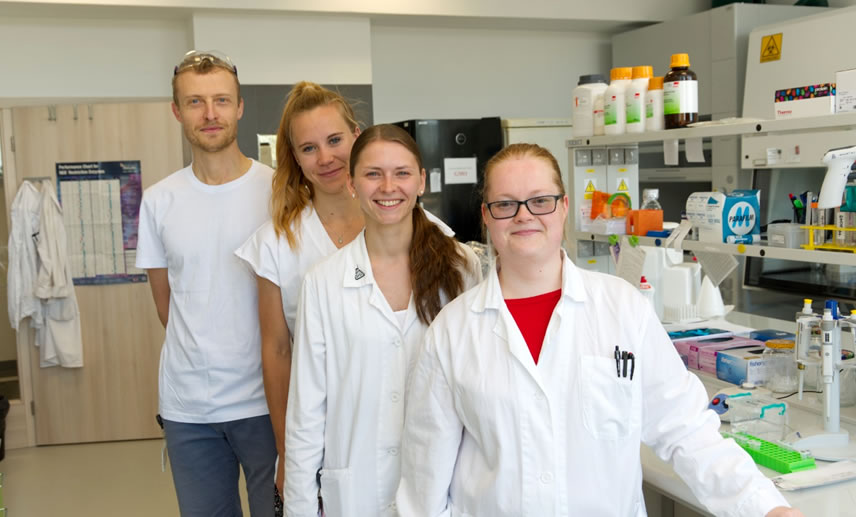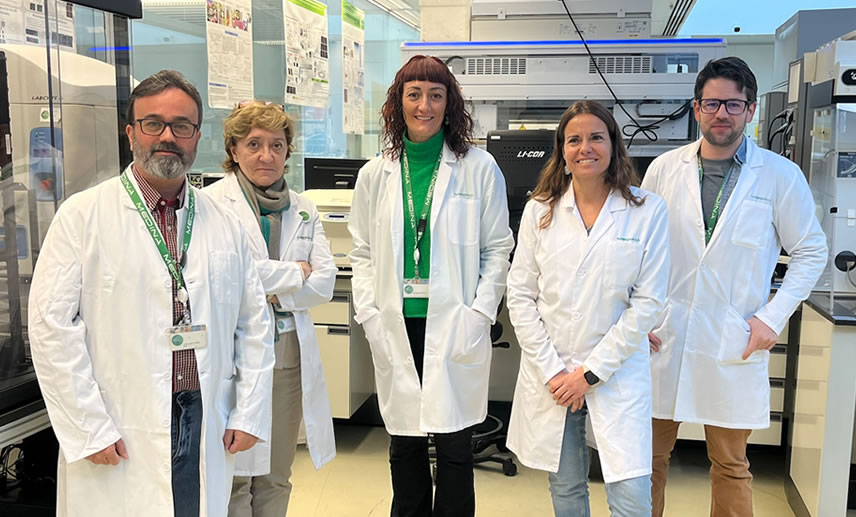Newsroom
User Story: Dr. Monika Schmidt, University of Hradec
Screening of European Chemical Biology Library revealed small molecules which inhibit a mitochondrial enzyme involved in Alzheimer’s disease

The access to the EU-OPENSCREEN network and infrastructure enabled us [to use] very efficient HTS to discover novel structures for our research. I very much appreciated collaborating with our partner, FUNDACION MEDINA, whose expertise has made this data possible.
Monika Schmidt
User:
Dr. Monika Schmidt, University of Hradec Králové, Czech Republic
EU-OPENSCREEN screening partner site:
Dr. Olga Genilloud, MEDINA, Spain
Collaboration with EU-OPENSCREEN
Dr. Monika Schmidt’s project focused on the mitochondrial enzyme 17beta-hydroxysteroid dehydrogenase type 10 (HSD10), which is known to contribute to the pathogenesis of Alzheimer’s disease. HSD10 overexpression has been implicated in the disease state and, as such, inhibiting it may lower the cytotoxicity associated with this neurogenerative disease.
Funded by EU-OPENSCREEN-DRIVE, this project assayed the European Chemical Biology Library (ECBL) against the HSD10 target enzyme. For this purpose, a fluorogenic reaction of the recombinant HSD10 enzyme and the 17β-estradiol substrate was optimised in a high-throughput screening format thanks to the EU-OPENSCREEN partner site MEDINA, led by Dr. Olga Genilloud.
MEDINA transformed the original multi-step enzymatic protocol of lower throughput from the Schmidt group into a single-step assay compatible with a 384-well plate format. The applied degree of atomisation and miniaturisation reached with this process generated a highly efficient and robust screen which enabled a throughput of 9,000 compounds per day.
Identified hits were cherry-picked and assessed through demanding pan-inhibitory filters to prove their specificity and were validated in a dose-dependent manner, presenting interesting low- to sub-micromolar IC50s. The inhibitory effect of these compounds was further confirmed by the Schmidt group using additional enzymatic assays and differential scanning fluorimetry as an orthogonal approach to prove inhibitor–enzyme interaction.
The top-scoring inhibitors yielded from this screen are currently under evaluation with more complex cellular assays and will be further optimised using medicinal chemistry approaches to improve both the solubility and the specific activity against this Alzheimer’s target.

